Lobuche East Peak Climbing
DURATION20 Days | ACTIVITYExpedition | MAX ALTITUDE6,119 meters | TRIP GRADEModerate |
GROUP SIZEMin. 2-14 Pax. | AccommodationTea House / Camping | TRANSPORTFlight | BEST SEASONN/A |
Overview
Lobuche East Peak climbing is an incredible trek you don’t want to miss. At 6,119 meters (20,075 feet), this peak has 360 views of the humbling Himalayan mountains and valleys. Of these mountains, you will be climbing very close to the Khumbu Glacier, Mt. Everest, Mt. Ama Dablam, Mt. Thamserku, Mt. Lhotse, and Mt. Nuptse.
Along this twenty-day trek, you will stay in tea houses along the way to Lobuche, then switch to camping in tents, and finally you will stay overnight at Gorakshep after visiting Everest Base Camp. This will be a truly memorable, challenging, and significant experience in your life.
The Lobuche East Peak climbing is very rough, and climbers must have some previous experience ice climbing and/ or mountaineering in order to participate. Additionally, climbers must be in good physical shape and be ready to fight the tough weather and thin air. Read further for ideas on how to prepare yourself before flying into Nepal.
This incredible trek will be offered pre-monsoon in the month of April and post-monsoon in the month of November. All gear, equipment, and clothing will be available for purchase or renting in Kathmandu, so you do not need to worry about bringing everything with you while travelling to Nepal. Plus, all travel plans, entry permits, accommodation, food, and much more is all planned out by your guide, so all you need to do is enjoy the climb and decide how to spend your time once back in Kathmandu afterwards!
If this challenge inspires you, please contact Mission Summit Treks for an unforgettable experience!
Outline Itinerary
| Day | Itinerary | Elevation (m) |
| 1 | Arrive in Kathmandu and check into the hotel. | 1,350 |
| 2 | Trip briefing, gear checking, and gathering official documents/visa | 1,350 |
| 3 | Early morning flight to Lukla and trek to Phakding | 2,860 (Lukla), 2,610 (Phakding) |
| 4 | Trek from Phakding to Namche | 3,440 |
| 5 | Acclimatization day in Namche, hike to Everest View Hotel and National Park Museum | 3,440 |
| 6 | Trek from Namche to Debuche via Tengboche Monastery | 3,820 |
| 7 | Trek from Debuche to Dingboche | 4,410 |
| 8 | Acclimatization day in Dingboche, hike up Nagarjun Hill | 4,410 |
| 9 | Trek from Dingbouche to Labouche | 4,930 |
| 10 | Trek from Lobuche to Gorakshep and arrive at Everest Base Camp. | 5,160 (Gorakshep), 5,364 (EBC) |
| 11 | Early morning hike to Kalapathar and trek to Lobuche village | 5,550 (Kalapathar), 4,930 (Lobuche) |
| 12 | Trek from Lobuche village to Lobuche Base Camp. | 5,150 |
| 13 | Pre-climb training day and rest for summit day | 5,150 |
| 14 | Lobuche summit day, then trek to Pheriche | 6,119 (Lobuche), 4,240 (Pheriche) |
| 15 | Celebration/rest day | 4,240 |
| 16 | Trek from Pheriche to Namche | 3,440 |
| 17 | Trek from Namche to Lukla | 2,860 |
| 18 | Fly back to Kathmandu and check into the hotel | 1,350 |
| 19 | Rest day in Kathmandu/sightseeing in Kathmandu Valley | 1,350 |
| 20 | Final departure | 1,350 |
Trip Highlights
- The world's highest peak, Mt. Everest (8,848 m above sea level),
- Can see the highest peak in Nepal over 8000 m: Lhotse and Makalu Peak
- Mt. Everest Base Camp and Kala Patthar
- Khumbu glaciers & Khumbu Icefall
- Namche and Khumjung Village
- Monastery (Tengboche and Khumjung)
- Musk Deer, Red Panda, and Himalayan Monal
- Get a chance to explore Sherpa culture and village
- Lukla Airport: Mountain Flight
- Lobuche Peak (6119 m)
- 20-day tea house + camping trip
Lobuche East Peak Climbing Itinerary
Lobuche east peak climbing begins with your arrival in Nepal. On the first day of expedition our company member will welcome you in Tribhuvan International Airport, Kathmandu and check into hotel. In the evening you will have welcome dinner with company members.
On the second day you will have briefing about entire treks and expedition on Lobuche east peak. Our trainer will check your gears and suggest what you need to buy. All your official documents will be checked so that there will not be any problem on climbing Lobuche peak.
We will leave Kathmandu on the third day with the early morning flight to Lukla. After landing on Lukla, we will have breakfast nearby Lukla airport and start our walk.
Mane and chorten, stone paved path welcome us at the beginning. The greenery and peaceful environment energize us. Since Phakding is in low altitude than Lukla, we will start walking downhills and follow the path on the bank of Dudhkoshi. Crossing different suspension bridges, rivers and walk through forest and reach Phakding, the beautiful village on the bank of Dudhkoshi.
After having breakfast, we will leave Phakding and walk towards Namche- the Himalayan Thamel. The walk will be adventurous as you will cross three suspension bridges, entered Sagarmatha national park, passes manjo viilage, pine trial and stone paved stairs before reaching Namche bazar.
The majestic view of Mt. Everest, Nuptse and Lotse, Tharmasarku and Konde relief your tiredness. In Namche, you can get all facilities available in city.
To enjoy with the beauty of Namche bazzar and acclimatize the body with increasing altitude we will have rest on fifth day of our trek. After having breakfast we will have a short hike to Everest view hotel and have wonderful view of Himalayan ranges with cup of tea or coffee. We will visit National Park museum on the way back to Namche bazzar from Everest view hotel.
The trial from Namche to Tengboche is easiest trial as you will have less downhills and uphills to pass. The walk begins with uphills and follows flat trial with wonderful view of Mt. Everest, Mt. Lotshe Lotshe shar, Amma Dablam, Tabuche, Cholache, Mt. Thamsekhu, Khakteka, Kusum Kangagru. We will pass different manne, chorten, monasteries and beautiful places - Phungi Thanga, Tengbuche and reach Debuche.
We will ascend towards Dingboche after having breakfast in Debuche. Crossing suspension bridges, walking through villages: Pangboche and Somare we will reach Dingboche. The beautiful pine forest, reduced rhododendron and scenery of Nuptse, Lhotse, Amadablam works as enzyme to activate you.
To prevent altitude sickness, we will take rest on Dingbouche for acclimatization. After having breakfast we will have short hike up to Nagarjun hill for continuous pace of walking and exercise. Enjoying the fabulous beauty of smiling Himalaya we will return back to Dingboche and have rest.
We will ascend towards Thukla with an astonishing view of pastures, grazing Yak, blue sheep amazing Amadablam and Lobuche peak. We will walk around 4.5 hours leaving the rest time on Thukla for Lunch. The path is quite difficult before reaching Thukla and follows bit easy trial until you reach a pleasant village in Lobuche.
It is a pleasure to reach Everest base camp, we will start our walk towards Gorakshep following the rocky trial over moranes. The higher you reach, the greatest view you can have. The pride of Solukhumbu region, Mt. Nuptse, Mt. Lhola, Mt Khumbuste, and Mt. Changaste, Mount Pumori, Mt Everest and Lobuche peak shines brighter and closer. You will reach Gorekshep after walking around 3 hours.
After reaching Gorekshep we will take rest for an hour and have Lunch. Without delaying the time, we will head towards Everest base camp. After around 1.5 hours of walk on moraine and rocky path we will reach Everest base camp. Mountainous surrounding, snow covered landscape and stepping on the base of Mount Everest gives glory. Spending quality time on EBC we will return back to Gorekshep for nightstay.
To grab the opportunity of viewing sunrise from Kalapathar, we will wake up early in the morning and ascend towards Kalapathar. Which is take 1 and 3o min from Ghorkshep to kalapather 5545m. The amazing view of sunrise and golden glowing Mount Everest, Nuptse, Lhotshe, Pumori, Amadablum gives life time memory.
We will return back to Gorekshep, have breakfast and descend towards Lobuche.
After having breakfast we will ascent towards Lobuche Base Camp crossing Khumbu valley located in the east face of Lobuche peak. We will reach the Lobuche base camp after walking around 4-6 hours.
We need proper preparation, thus our climbers will train you. You will have practice of climbing on the 13th day and enough rest for upcoming summit climb to Lobuche peak.
We will hike to Lobuche high camp from Lobuche base camp in around 4 -6 hours. After reaching high camp, we will have enough rest to acclimatize our body and prepare it for climbing Lobuche peak.
The most awaited day of the entire expedition. We will wake up early in the morning and start climbing with the aim of viewing sunrise from the Lobuche East peak (6,119m/20,075ft). We will ascend to the edge of glacier and climb the narrow ridge with fixed ropes on snow covered surface of mountain.
We will have panoramic view of Mt. everest, Lhotse, Nuptse, Amadablam, Cholatse, Pumori and differet peaks of Everest region from the Summit. After spending certain time on Lobuche peak, taking photographs and vedios we will descend down to Lobuche High camp followed by Lobuche Base camp.
The atmospheric condition is variable which may change with time. We should not have summit climb in bad weather, thus one day is taken as reserve day for waiting good weather. In case we have good weather, we will continue climbing otherwise we will wait a day for the best weather to summit climb.
We will leave Lobuche base camp and descend towards Lobuche. Enjoying with the scenery of Everest region, we trek ahead to reach pangboche. The view of Mt. Pokalde, Thamserku, Kantega and other peaks along with rhododendron and juniper standing on hills energize us. After around 5-6 hours of walk we will reach Pangboche for night stay.
Day by day we will descend down to lower altitude. Leaving Pangboche we will cross suspension bridges, walk through pine forests enjoying the view of Amadablam, Thamserku, Nuptse, Lotse and different peaks we will reach Namche in around 5-6 hours.
After having breakfast we will descend down to Manjo village, pass phakding village and reach Luka. It takes around 6 -7 hours to reach Lukla from Namche. Leaving all the wonderful scenery, mountains and amazing landscape, the long journey come to an end. We will have night stay in Lukla.
Depending on the time of flight, we will return back to Kathmandu from Lukla airport and check into hotel. You will have farewell dinner with company member in the evening. After returning from Kathmandu airport you can have shopping or full rest depending on your choice.
The entire trek to EBC and Lobuche east peak climbing will complete after departure from Nepal. Company member will drop you to Tribhuvan International airport depending on your flight time.
COST INCLUDES
THIS TRIP INCLUDES
Airport pick up and drop by private vehicle
3-star Category accommodation in Kathmandu on Bed n breakfast
Kathmandu sightseeing ( swayambhunath, Boudhanath stupa, pashupatinath, bhaktapur durbar square)- Entry Ticket, Private car, Private Tour Guide)
Flight from Kathmandu to Lukla and Kathmandu
Lukla to Lukla Full board meal during the trek
All accommodations during the trek. (Toilet will be outside from your room)
All necessary paper works Everest National park entry permit
All permits for Lobuche east peak Climbing
All equipment for climbing (in Rent)
A helpful, knowledgeable, friendly, well English speaking trained, government license holder Excellent Sherpa guide & porter With all his salary, food, drinks and insurance.
All necessary items for Climbing such like:- Climbing tent, Kitchen tent, sleeping bag, mattress, climbing equipment, etc.
Medical supplies (first aid kit will be available)
All government taxes and office expenses.
Trekking route map
Domestic Airport tax
THIS TRIP EXCLUDES
Nepal entry visa fee
International airfare/Your Travel insurance
Lunch/ Dinner in Kathmandu
Mineral water/bottles drinks/Sweets things during the trek.
Hot shower/Battery charge /WI-FI for the camera during the trek
Tips for guide & porter
Map

Click The Map
Gallery
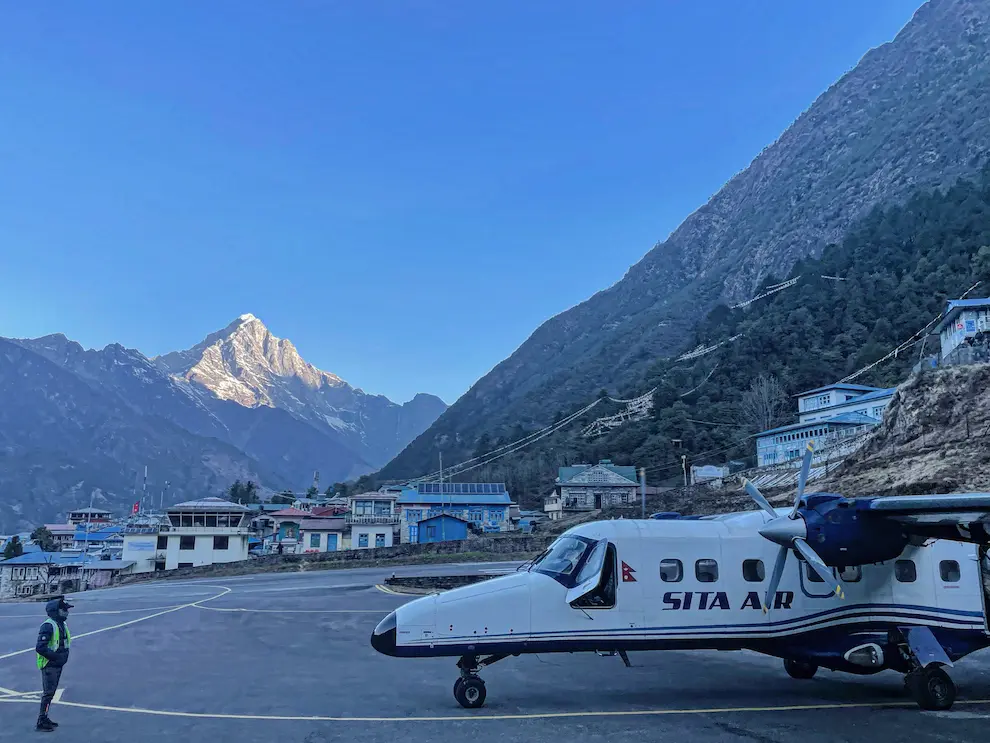
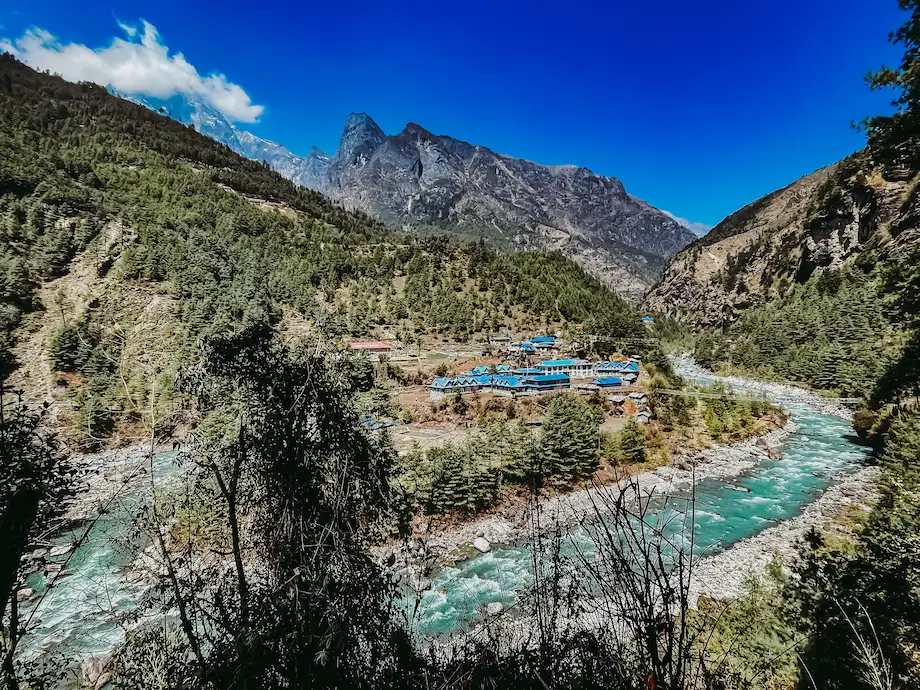
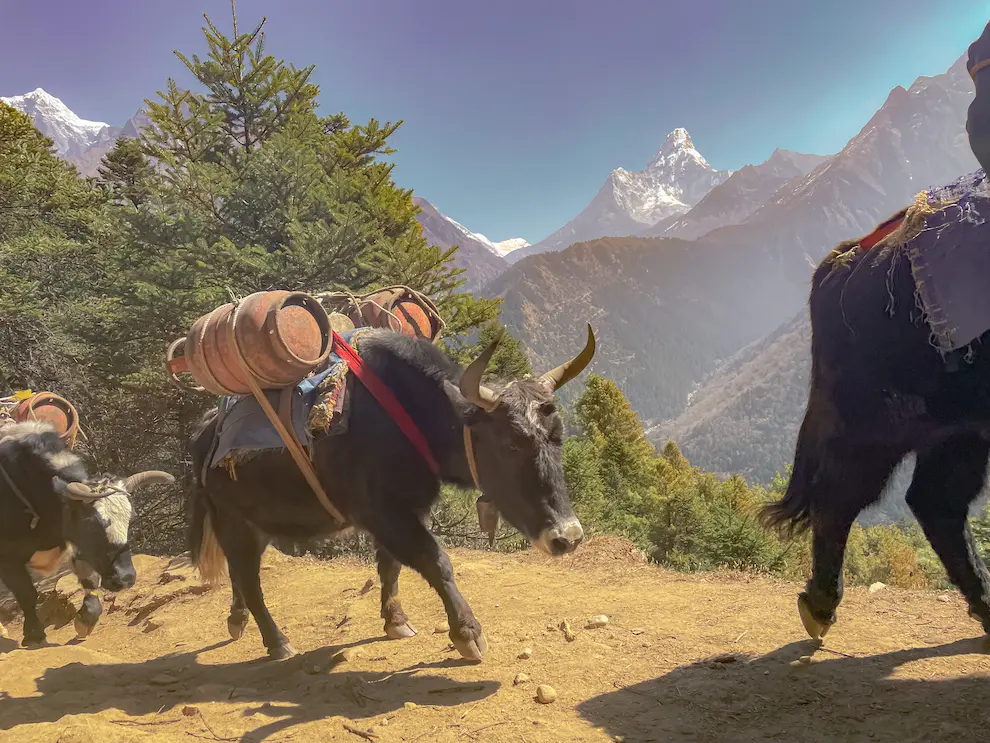
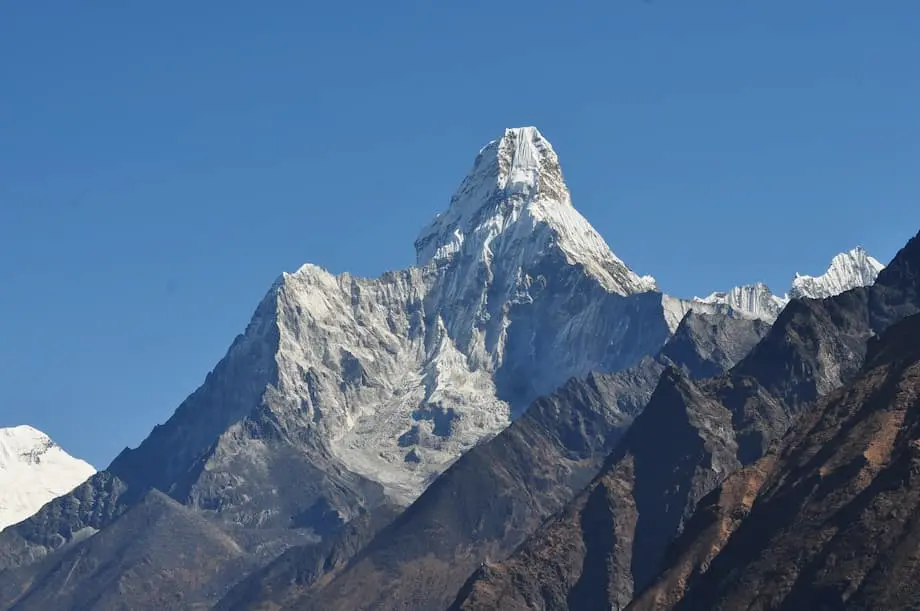
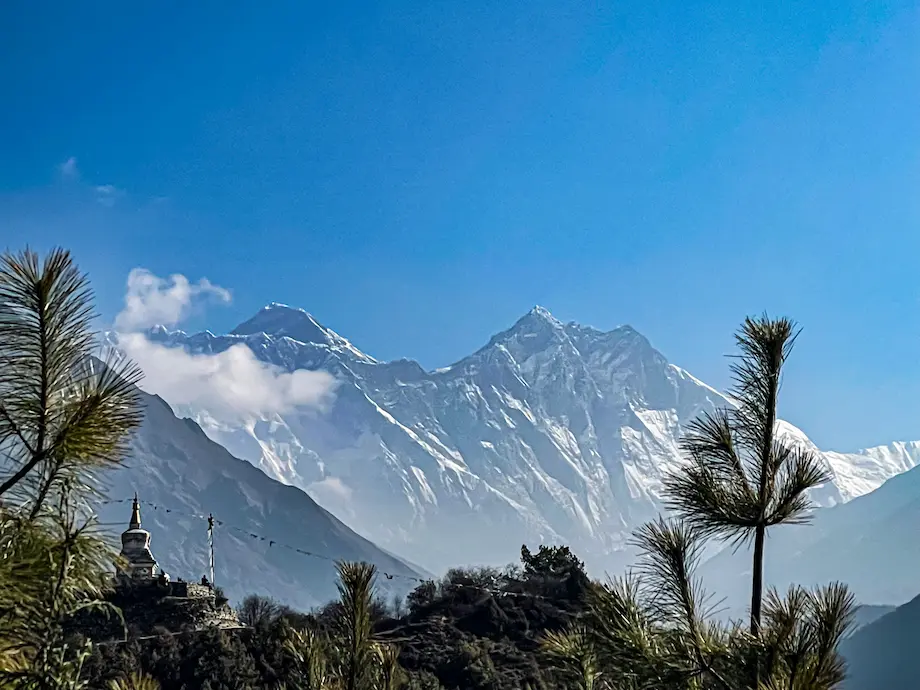

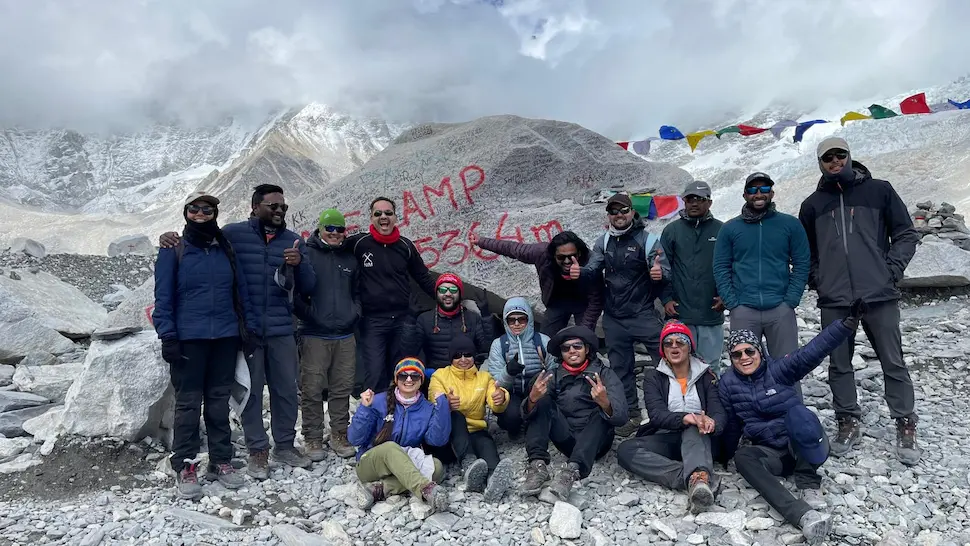
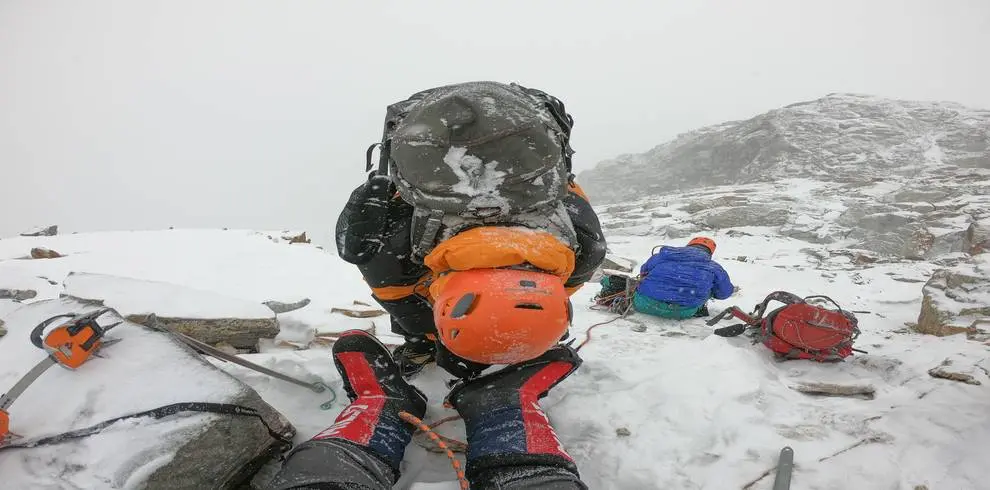
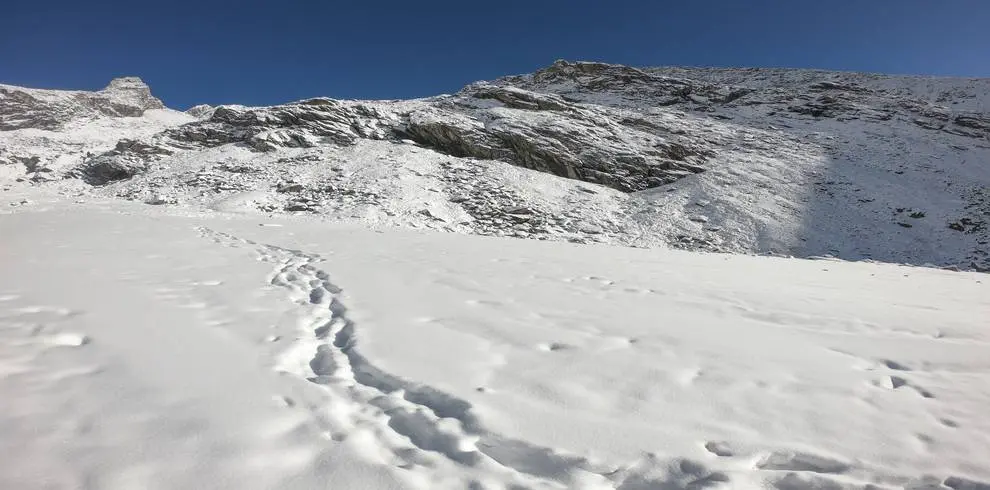
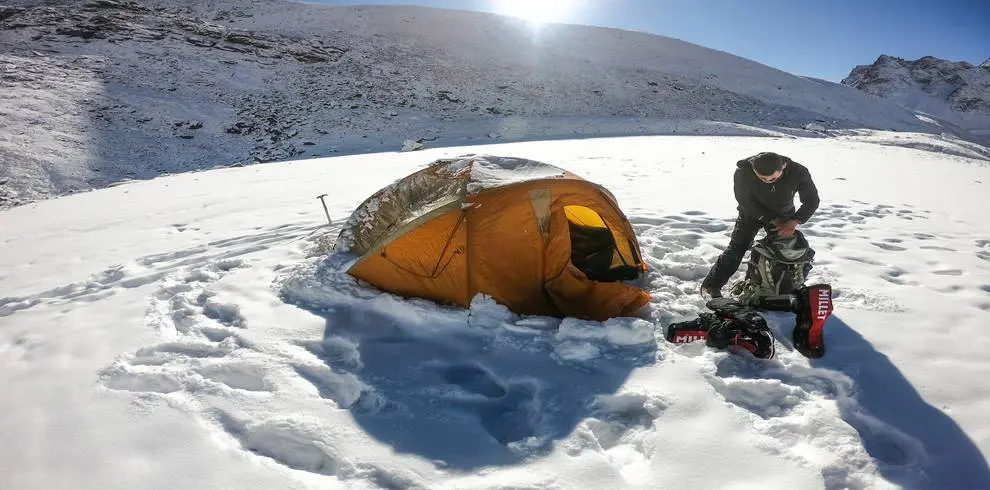
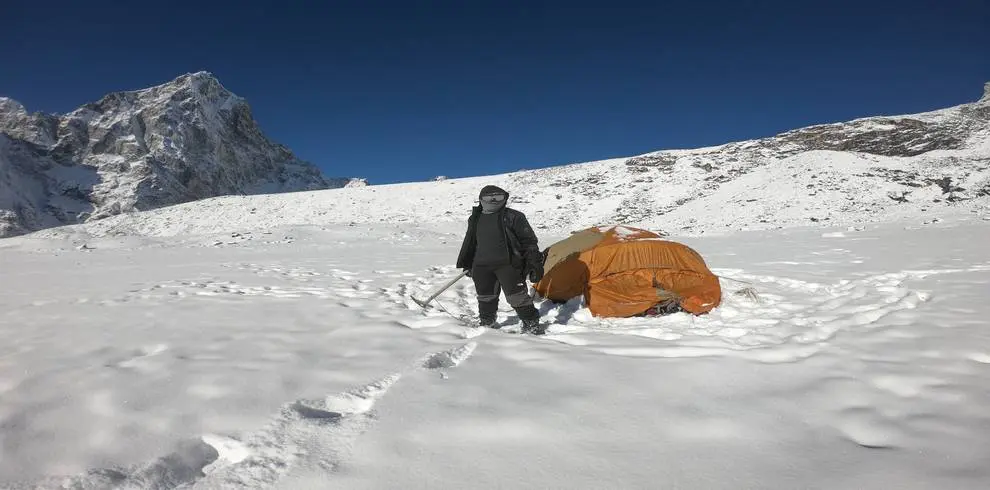
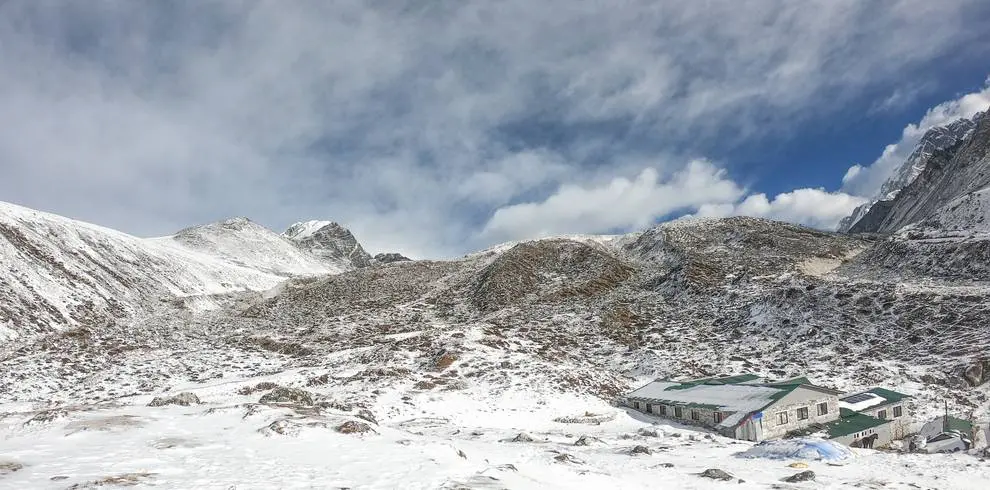
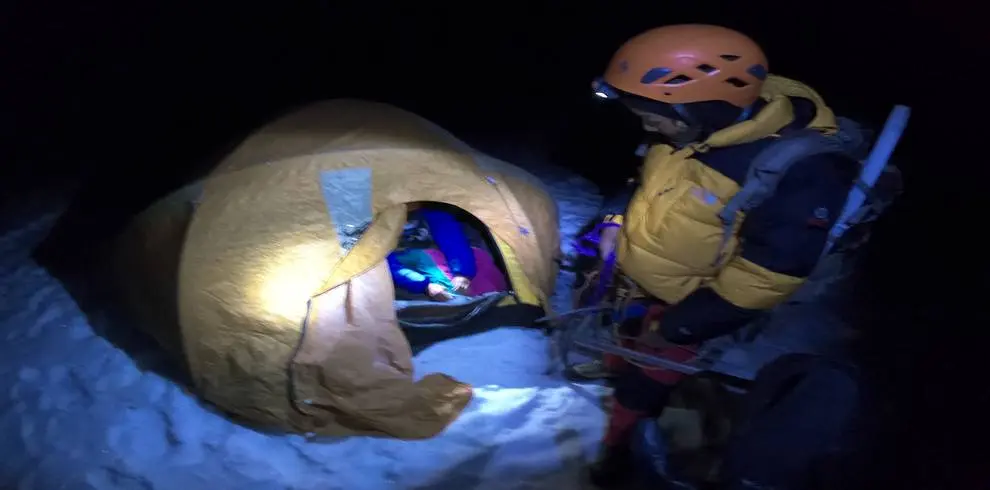
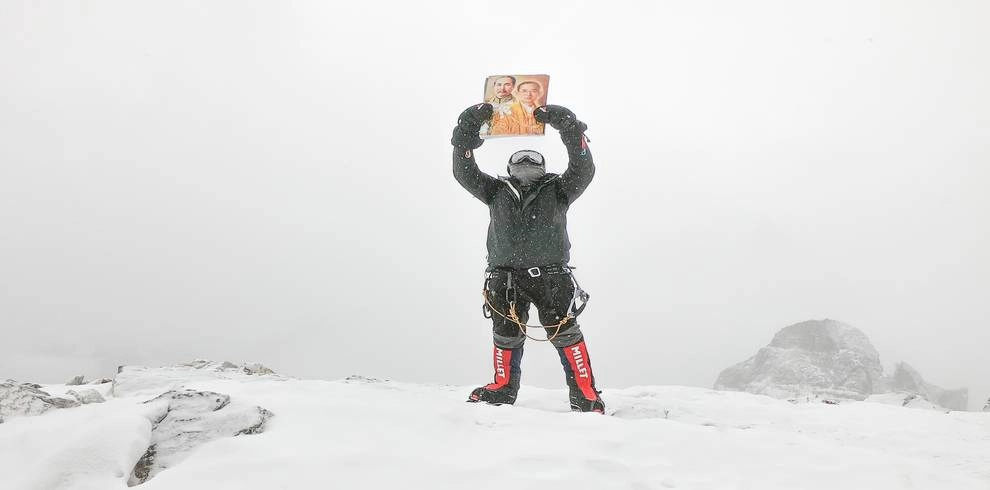
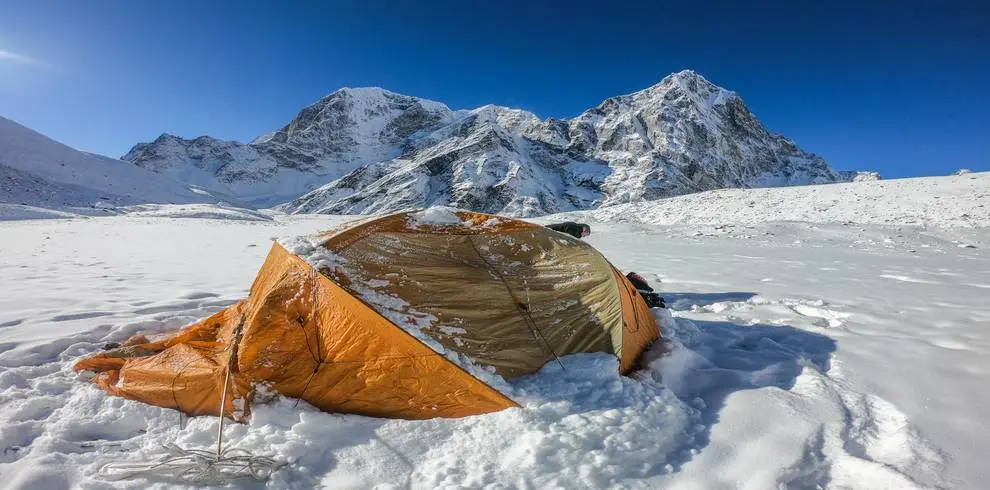
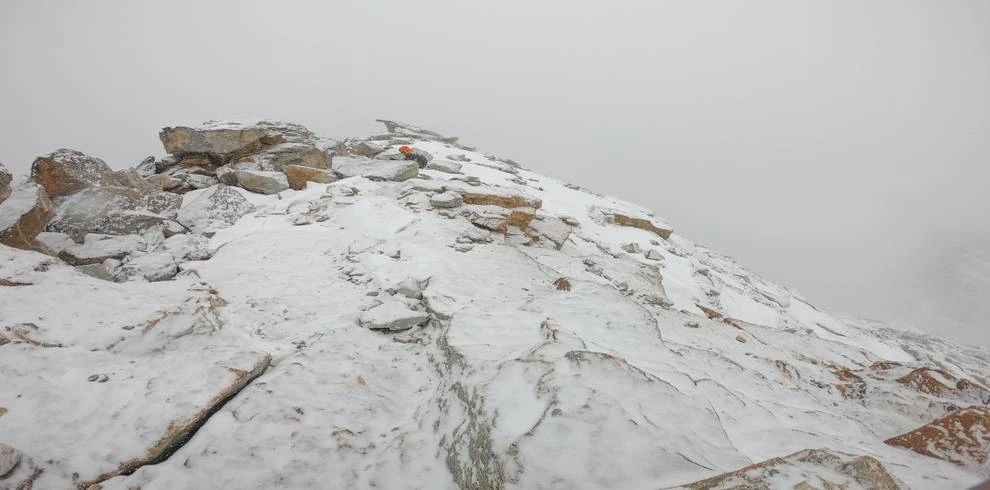
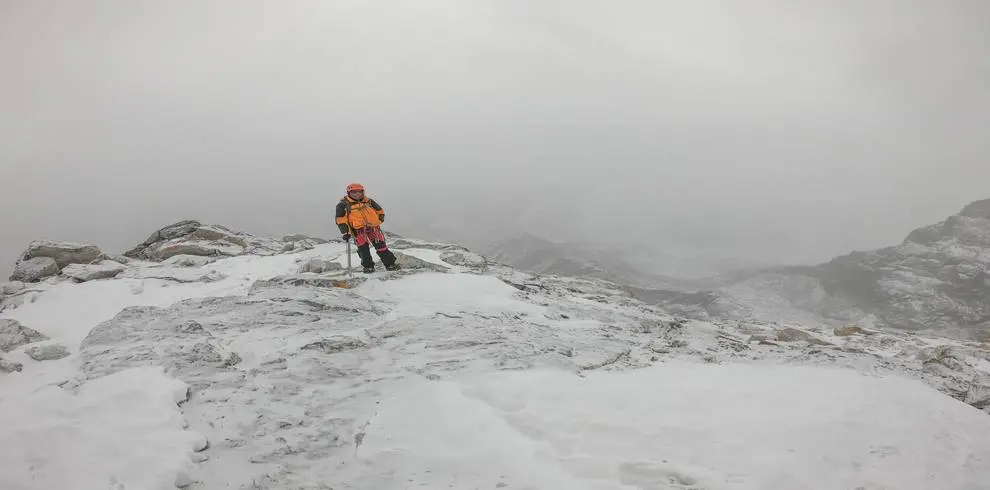
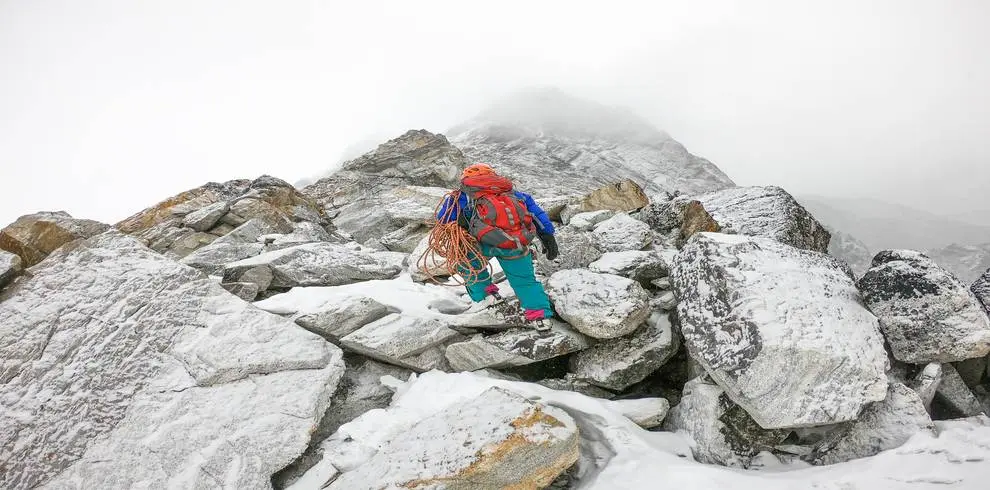
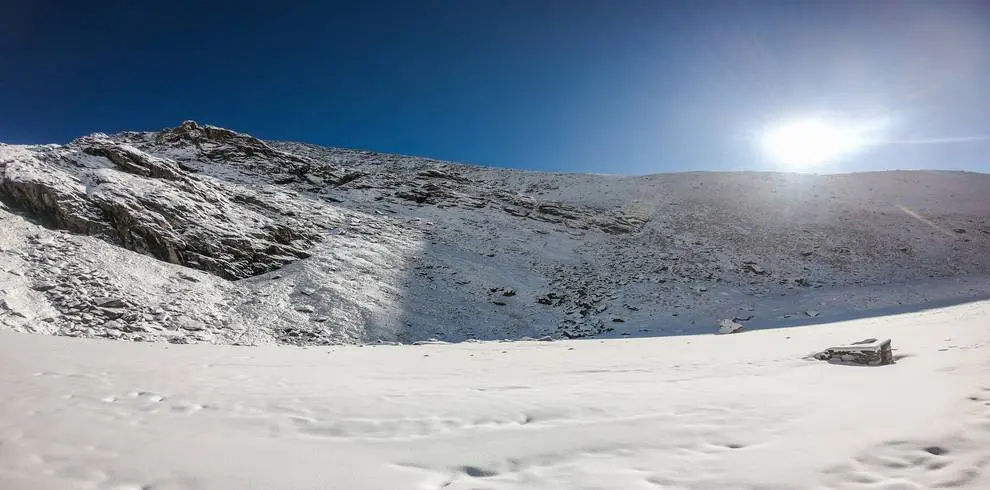
FAQs
Lobuche peak climbing is one of the challenging and technical peak in the Everest khumbu region. So is classified as a advance-difficult peak then island peak & mera peak of Khumbu region.
Lobuche peak climbing takes 20 days from Kathmandu, back to Kathmandu.
Yes, you can see 360 Degree panoramic view of the Himalayas including Mt. Everest, as well as Mt. Ama Dablam, Mt. Thamserku, Mt. Lhotse and Mt. Nuptse etc.
This trek is unique in length and challenge, as well as proximity to the Khumbu Glacier. You will also be able to visit Everest Base Camp, a rare opportunity.
Starting to hike with a heavier pack is a good place to start. As well as getting to as high of elevation as you have around you. We will be hiking for about six to seven hours each day. Some of those days will be climbing over glaciers.
The best time for Lobuche peak climbing is Spring season. you can also do in Autumn but best season is is Spring.
More Info
Lobuche East Peak climbing is a moderate expedition, combined with the Everest Base Camp trek. It is an opportunity to make history by climbing a peak above 6000 m, gain experience, and learn techniques for climbing mountains.
We need only 20 days to complete the trek and expedition. Enjoy the EBC trek, followed by Lobuche East Peak (6119 m/20,075 ft). If you only want to climb and exclude the EBC trek, we can customize the trip with prior information. A late decision regarding customization may not work, as booking and arrangements have to be done on time. To acclimatize your body to the high altitude, the EBC trek is important before climbing Lobuche East Peak.
Climbing Lobuche East Peak includes various aspects of trekking and expeditions. The panoramic view of the mountains, trekking in the Everest region, a flight to Lukla, walking through the forest, experiencing Buddhist culture, and the hospitality of the Sherpa people, as well as their way of life, make the journey memorable.
Some of the most important information related to climbing Lobuche East Peak is described below:
Visa
To get a tourist visa in Nepal, you can visit your nearest Nepalese embassy. If reaching the Nepal embassy is not possible from your place, you can get an arrival visa from Tribhuvan International Airport, Nepal. You can get a visa for one month or more, depending on your available time.
Accommodation
We will provide you with the best accommodation throughout the trek. You will get a luxury hotel in Kathmandu and tea houses in the Everest region. Tea houses provide clean rooms, good food, and the best hospitality. An attached room will be available up to Namche, whereas the bathroom will be outside the room at a higher altitude.
Food
Our package includes three meals a day, i.e., breakfast, lunch, and dinner. Depending on the size of the group, you can choose the food of your choice. Generally, you will have coffee or tea, bread, jam, curry, eggs, porridge, and muesli for breakfast. Dinner and lunch items include Nepali thali (dal, rice, curry, pickles, pappad), MO:MO, noodles, chowmein, bread, sandwiches, pasta, spaghetti, and other local food items.
Drinking water
You will get pure drinking water throughout the trek. It is essential to carry a water bottle so that you can fill your bottle before leaving the teahouse. Always use hot water to prevent coughing and chilling from the cold.
Lobuche East Peak Climbing Equipment
- Helmet
- Climbing harness
- Belay/rappel device
- Locking carabiners x2
- Non-Locking Ice Axe
- Crampons
- Climbing carabiners x1
- 6 meters of 16mm tape or 8mm cord
- Pruslik
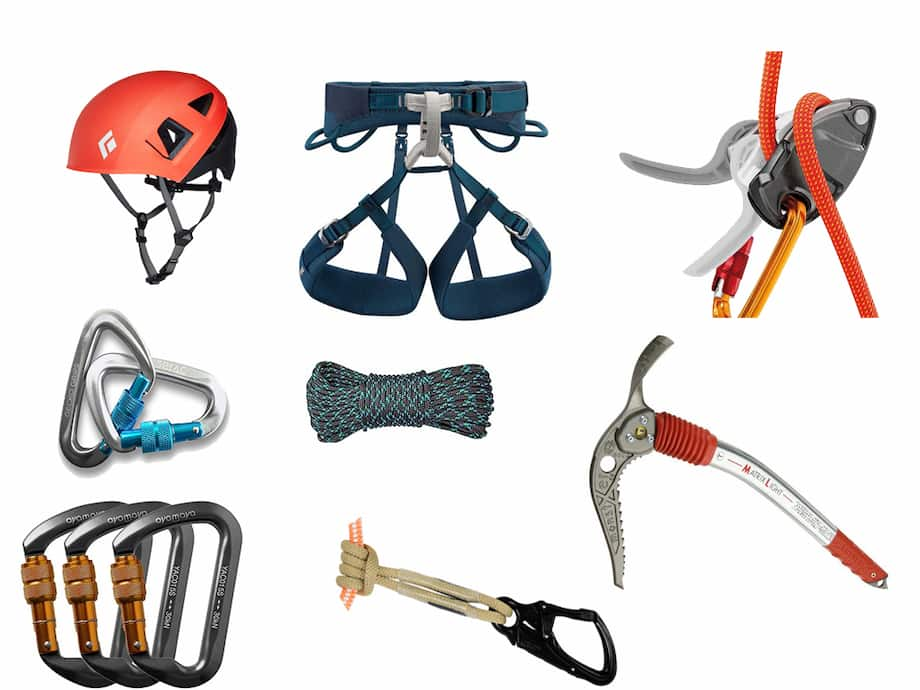
Lobuche Peak Climbing Route Map
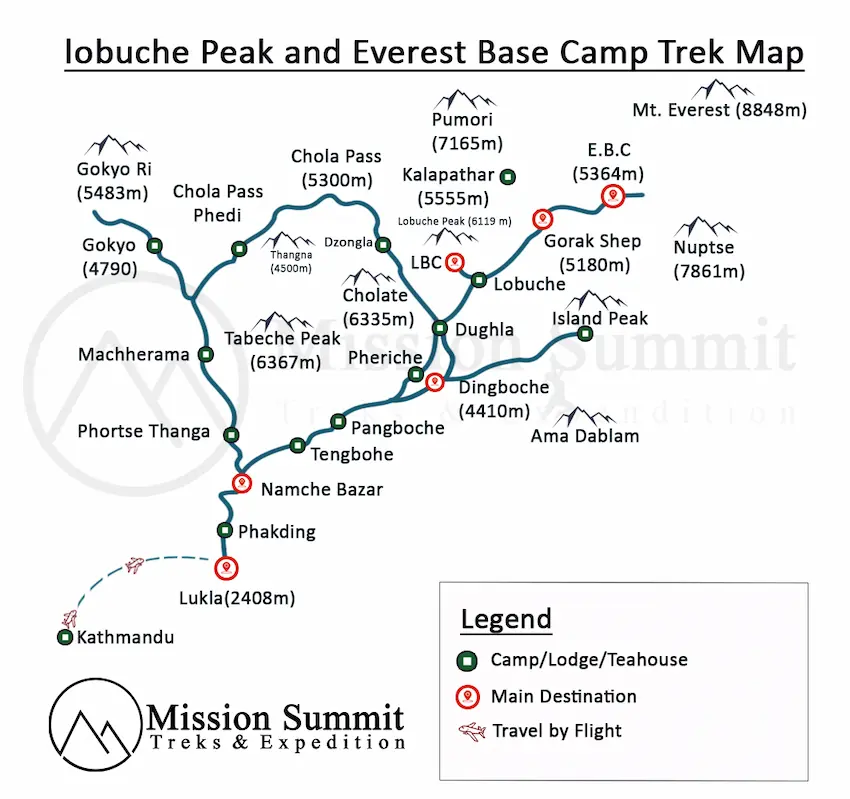
How hard is Lobuche East Peak Climbing?
Lobuche East Peak climbing is considered a moderate expedition. A fresher can easily climb Lobuche East Peak. It is not necessary to be an expert and experienced climber to attempt the summit climb of Lobuche. But you should be mentally and physically fit. An expert will guide you throughout the expedition, so you will have the lowest risk while climbing the peak. The climber or Sherpa, will give you instructions and train you to use the instruments and techniques of climbing. You should take the instructions seriously and follow the guidelines for a successful climb.
Preparing for Lobuche East Expedition
Lobuche East peak is a moderate difficulty that doesn't require extensive preparation or experience. However, it is important to be familiar with the Himalayan environment and trekking at high altitudes. Additionally, it's recommended to engage in physical exercise and long walks regularly for three months before the trek. Our climbing experts will train and equip you with the necessary knowledge and skills required to climb the peak. They will accompany you throughout the expedition.
Clothing
Treks and expeditions are challenging tasks unless you have proper preparation. Clothing is very important to maintain your body temperature. Here is the clothing list for Lobuche East Peak Expedition that you must pack!!
- Warm down jacket
- Water and windproof jacket (a poncho or umbrella can also be used)
- Long-sleeved synthetic fleece (windproof material is preferred)
- Thermal underwear
- Hat, gloves, and scarf
- Comfortable hiking trousers (loose-fitting)
- Shorts and trousers or a skirt
- Two pairs of warm wool-blend socks
- Two pairs of running socks or liner socks
- Proper hiking boots
- Running shoes and flip-flops
- Two to three T-shirts
- Water bottle
Altitude sickness
Altitude sickness is an illness that occurs as you ascend to high altitude. The symptoms occur within 6–24 hours of reaching a high altitude and can be fatal if not treated on time. Therefore, it is very important to stay alert to any of the following symptoms.
Symptoms of altitude sickness
- Headache
- Nausea and vomiting
- Dizziness
- Tiredness
- Loss of appetite
- Upset stomach
- Feeling unsteady
- Shortness of breath
- Increased heart rate
- Difficulty sleeping
Guidelines after altitude sickness
- Do not climb any higher for the next 48 hours.
- Descend to a lower altitude if possible.
- Take complete rest until you feel well
- Do not exercise.
- Do not smoke.
- Drink plenty of water.
- Take external oxygen supply if necessary.
- Take anti-sickness medicines.
If you don't notice any improvement in your health within 48 hours, you need to be immediately transported to the city for medical support.
Preventive Measures
Although there is no way to train your body before trekking to adapt to high altitudes, there are several ways to prevent altitude sickness, including:
- Taking plenty of rest
- Ascending slowly and gradually as you reach higher altitudes
- Staying hydrated
- Eating high-calorie food
- Avoiding smoking, drinking, or consuming tranquillizing medicines
Insurance
In cases of emergencies, such as acute altitude sickness or natural calamities, we should immediately depart by helicopter. Therefore, it's essential to purchase health insurance before embarking on the trek to cover such costs.
Options
- Solo trekking with a private guide and porter
- Trekking with only a guide
- Trekking with a guide and porter
- Trekking with a group with a guide and porter
Island Peak vs. Lobuche Peak: Which is the Best for Climbing?
If you’re planning to climb in the Everest Region, you might be confused about choosing between Island Peak and Lobuche Peak. Here’s a comparison of the two peaks to help you make an informed decision:
| Feature | Island Peak | Lobuche Peak |
| Location | Everest region | Everest region |
| Height | 20,305 ft./6,189 m | 20,075 ft./6,119 m |
| Total Days | 16 Days | 17 Days |
| Difficulty (rated on a scale of 1-5) | 2 | 2.2 |
| Permit | NMA, national park & community entry fee | NMA, national park & community entry fee |
| Best Season | spring (Mid-March to April) & autumn (mid-September to December) | spring (Mid-March to April) & autumn (mid-September to December) |
| Cost | USD 1799-5000 | USD 2500-5000 |
| Accommodation and Food | tea house + tent, available food | tea house + tent, available food |
Both Island Peak and Lobuche Peak are located in the Everest Region and require three permits, i.e., a Nepal Mountain Association (NMA) permit, a national park entry permit, and a community entry permit. The best time to climb both peaks is during the spring (Mid-March to April) and autumn (mid-September to December).
The difficulty level for Island Peak is rated at 2, while for Lobuche Peak, it's rated at 2.2. The total number of days required to climb Island Peak is 16, whereas for Lobuche Peak, it's 17. The cost of climbing Island Peak ranges from USD 1799 to 5000, while for Lobuche Peak, it's USD 2500 to 5000.
Both peaks offer similar facilities for accommodation and food. Climbers can stay in tea houses until the base camp, then use tents for a night's stay during the ascent.
In conclusion, both Island Peak and Lobuche Peak offer great climbing opportunities. The choice between these peaks ultimately depends on your personal preference and experience level.
Reviews
No Reviews






